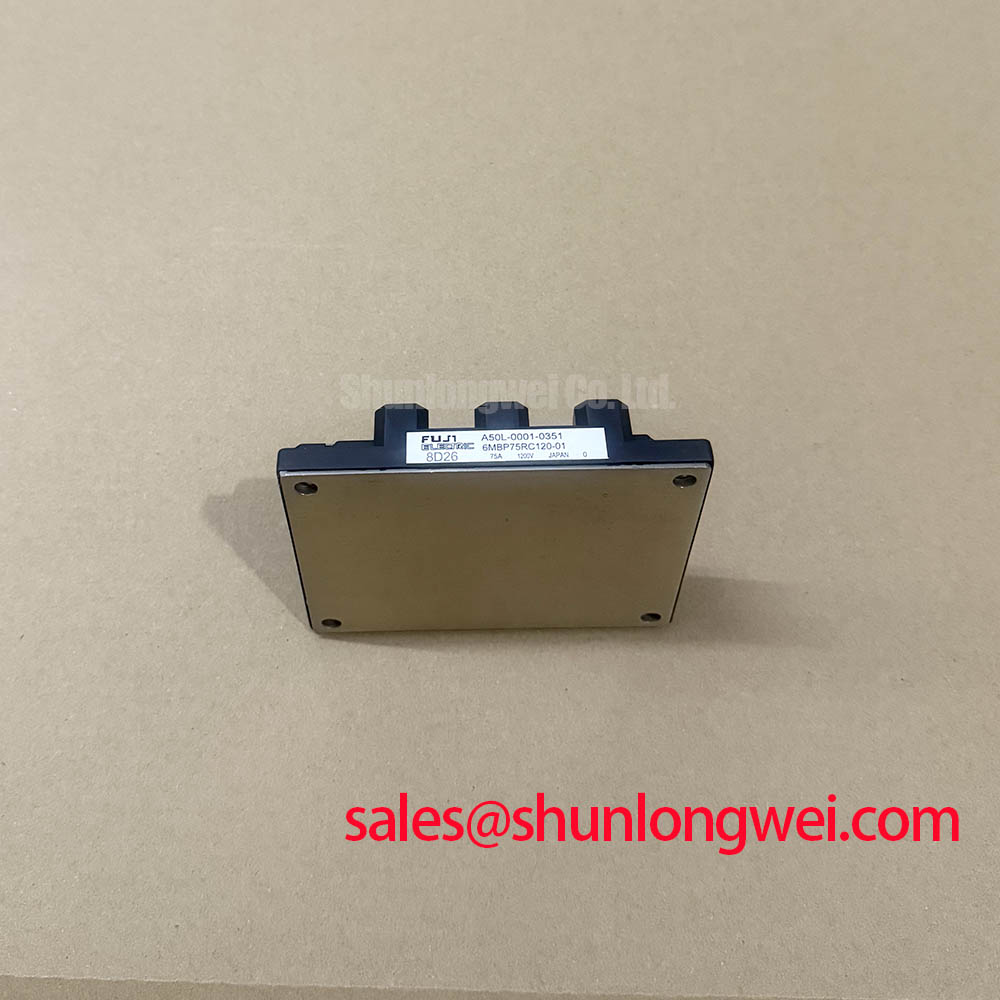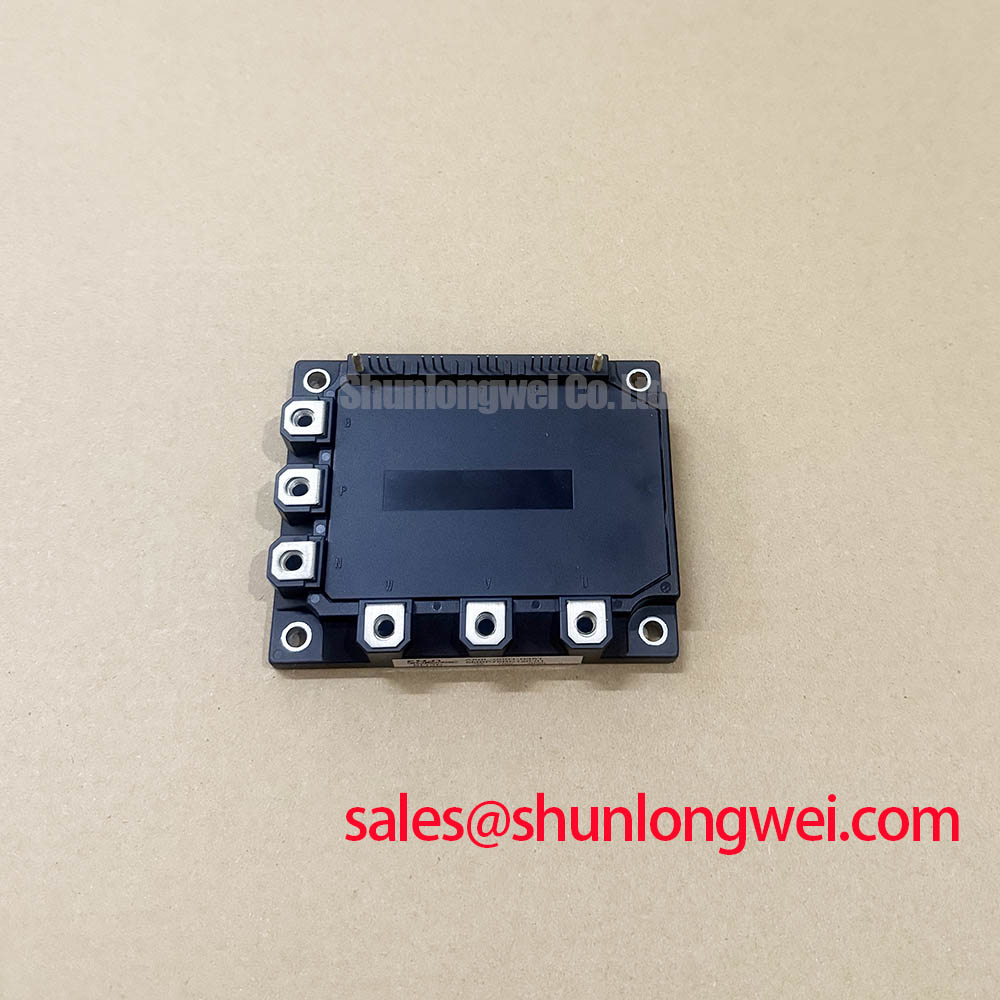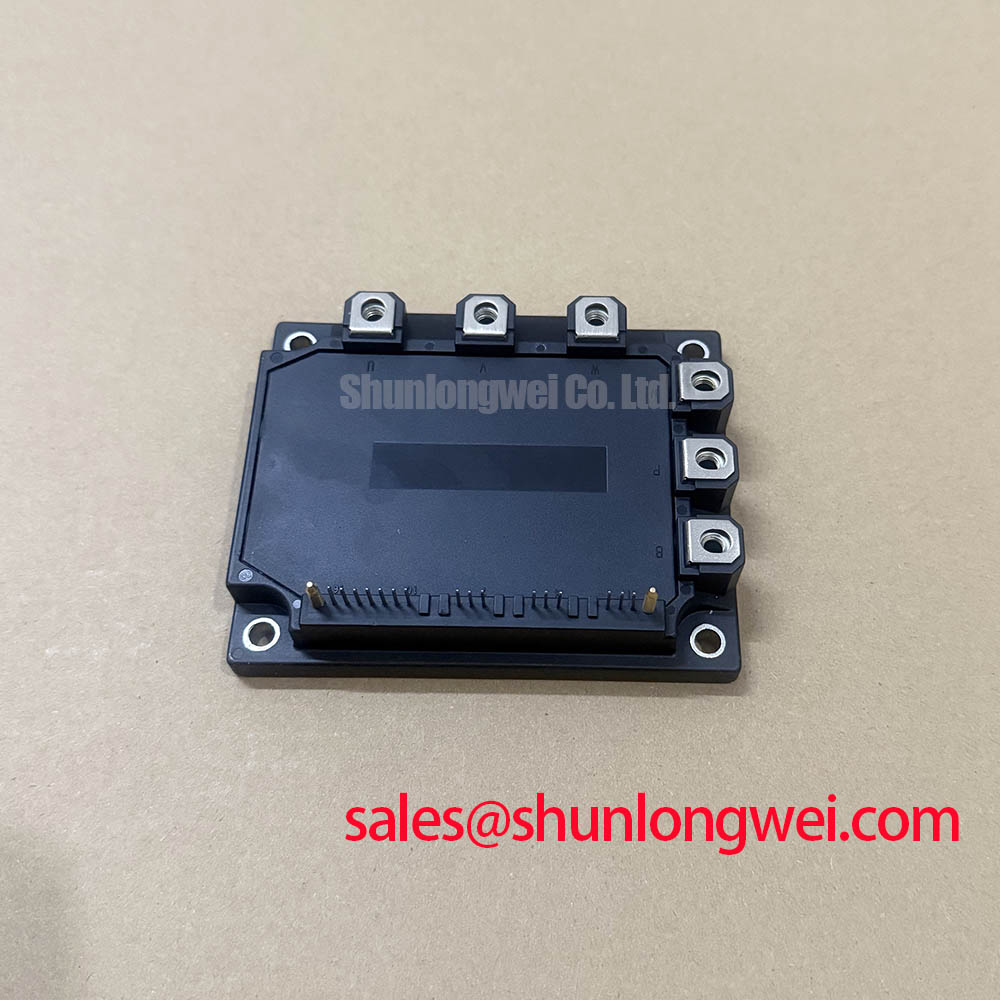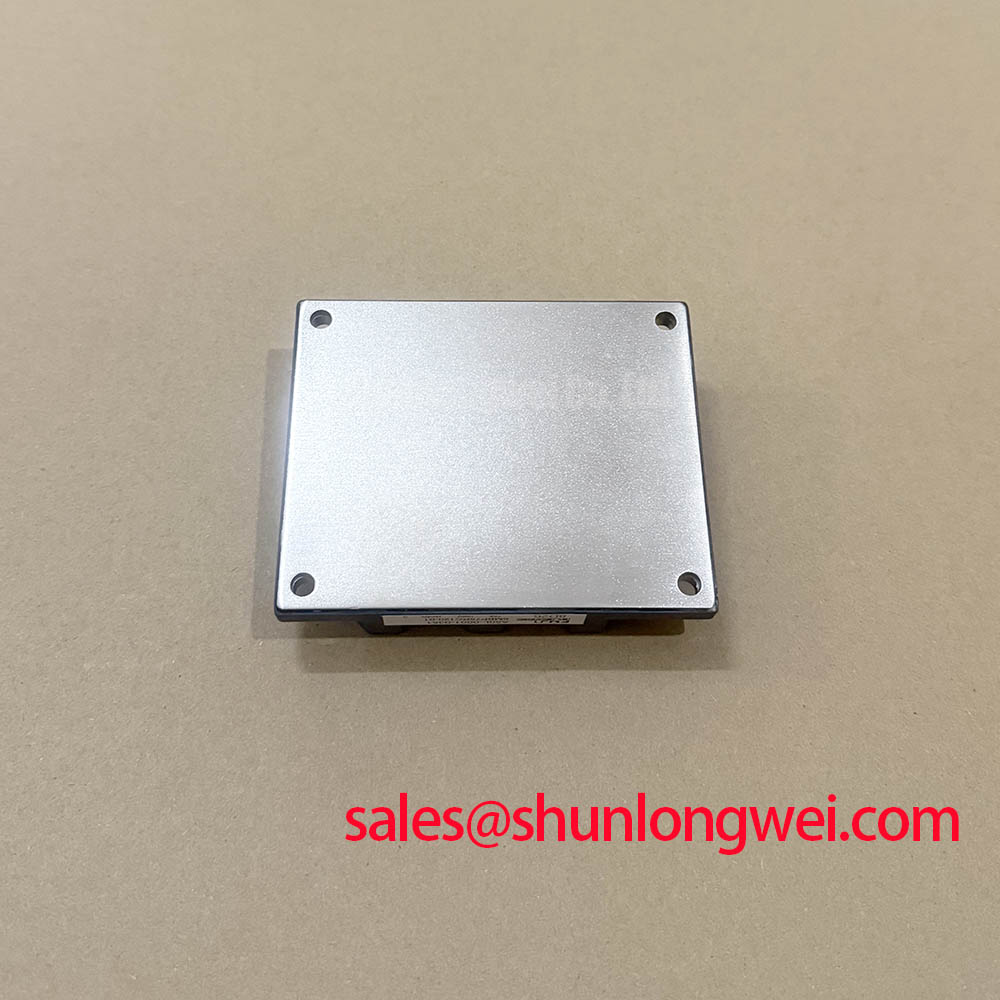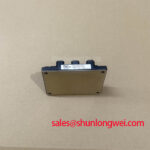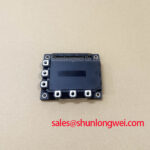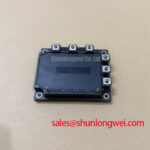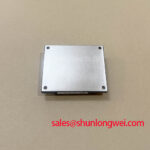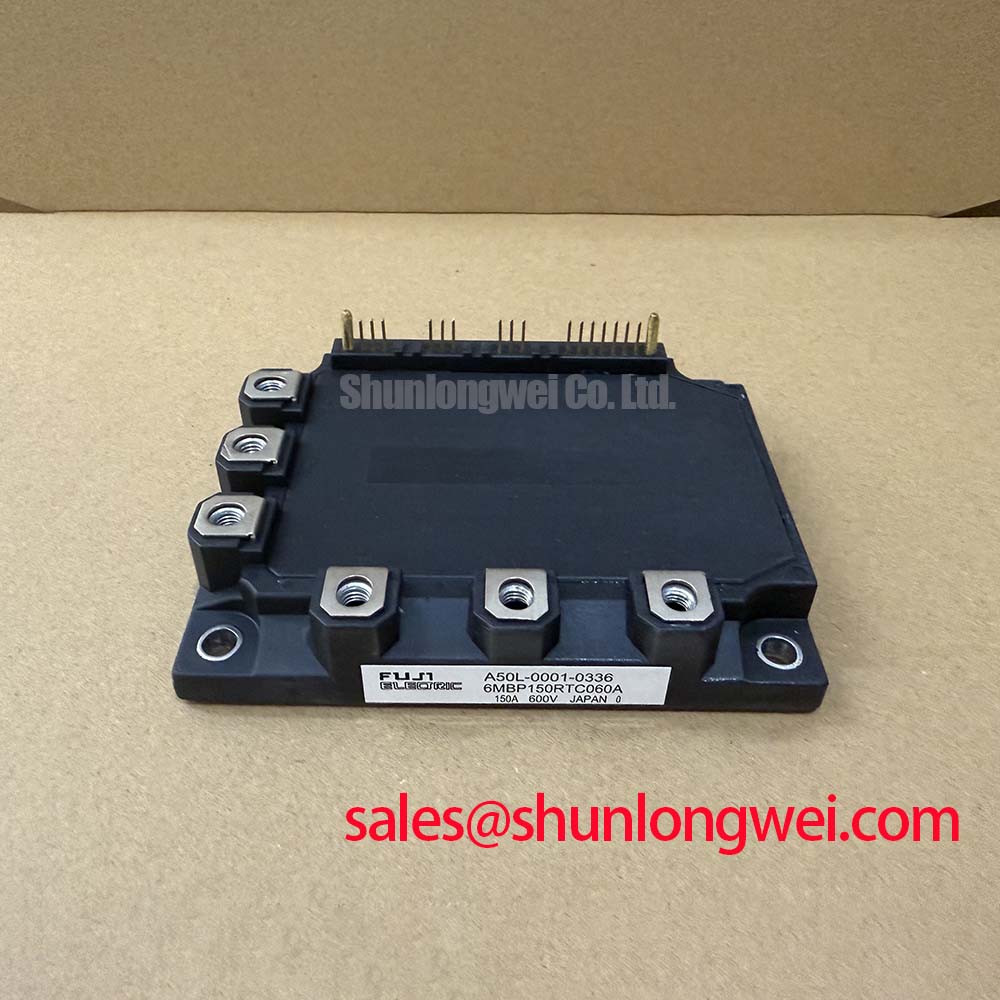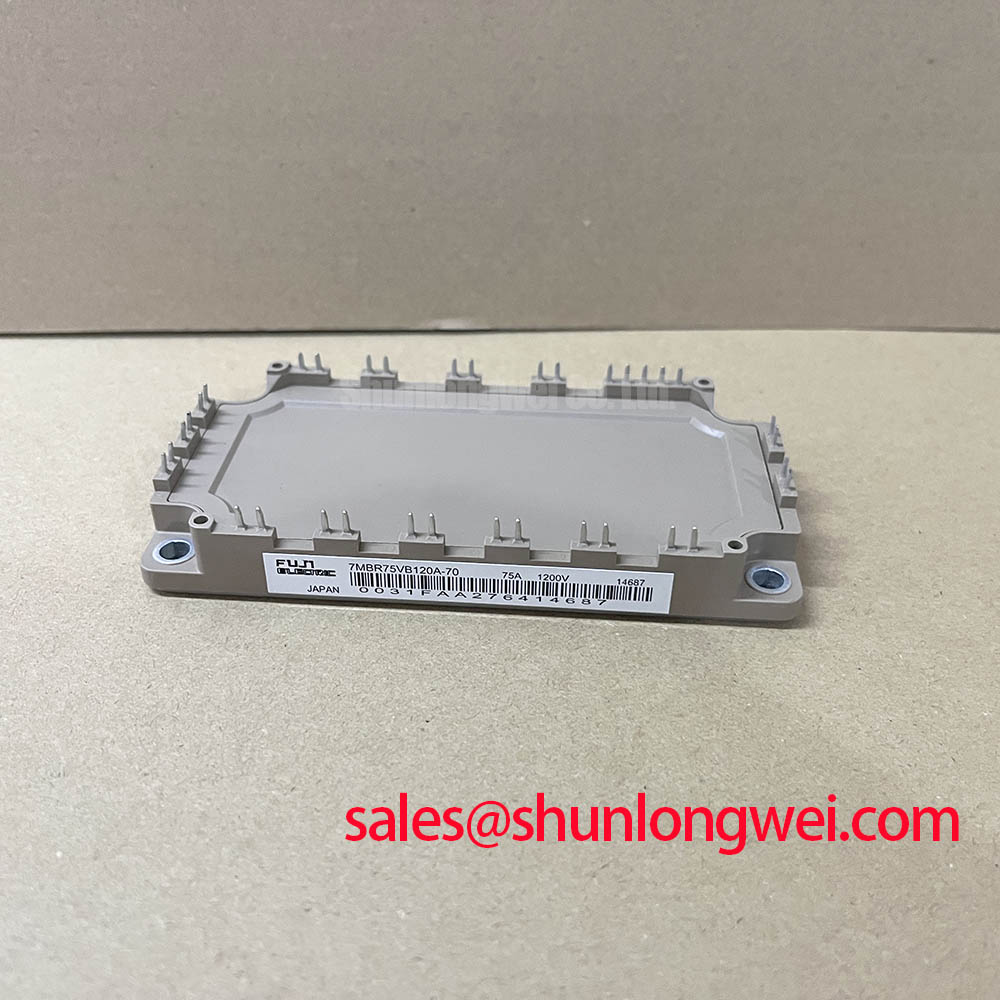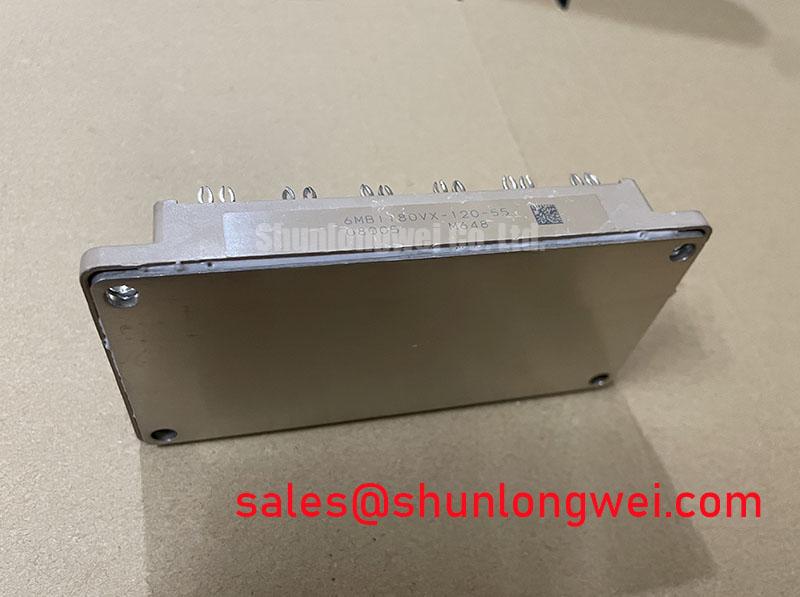Content last revised on November 12, 2025
Fuji Electric 6MBP75RC120-01 | Compact 1200V/75A PIM with Advanced RC-IGBT Technology
The Fuji Electric 6MBP75RC120-01 is an intelligently engineered Power Integrated Module (PIM) designed for high-density, high-efficiency power conversion applications. Integrating a full three-phase inverter bridge, a brake chopper, and a converter bridge into a single compact package, this module is a cornerstone for modern variable frequency drives and general-purpose inverters. Its standout feature is the implementation of cutting-edge Reverse Conducting IGBT (RC-IGBT) technology, setting a new benchmark for thermal performance and system simplification.
Technical Deep Dive: The Engineering Edge
Two core technologies define the superior performance of the 6MBP75RC120-01. Understanding them is key to leveraging this module for a competitive design advantage.
- Reverse Conducting (RC-IGBT) Technology: Traditionally, an IGBT requires a separate Freewheeling Diode (FWD) connected in anti-parallel to handle reverse current during inductive load switching. The Fuji Electric RC-IGBT monolithically integrates the FWD function onto the IGBT chip itself. This is not just a space-saving measure; it provides a direct thermal path for diode losses, reducing the peak temperature of the diode junction. The result is significantly improved thermal cycling capability, lower overall module thermal resistance, and enhanced reliability under demanding load conditions.
- Power Integrated Module (PIM) Topology: This module consolidates the essential power stages for a small motor drive into one component. By integrating a 3-phase input rectifier, a brake chopper IGBT, and a 3-phase output inverter, the 6MBP75RC120-01 drastically reduces the bill of materials (BOM), simplifies PCB layout, and minimizes assembly complexity. This high level of integration inherently reduces stray inductance and improves electromagnetic compatibility (EMC), streamlining the overall system design and validation process.
Key Parameter Overview for System Designers
The following table outlines the critical electrical and thermal characteristics of the 6MBP75RC120-01. For a comprehensive list of specifications and application notes, it's recommended to Download the Datasheet for the reference series.
| Parameter | Value |
|---|---|
| Collector-Emitter Voltage (Vces) | 1200V |
| Continuous Collector Current (Ic) @ Tc=80°C | 75A |
| Configuration | 6-Pack IGBT + Brake + 3-Phase Converter (PIM) |
| Collector-Emitter Saturation Voltage (Vce(sat)) typ. | 2.0V |
| Integrated Freewheeling Diode | Yes (RC-IGBT Technology) |
| Short-Circuit Withstand Time (tsc) | ≥ 10µs |
| Isolation Voltage (Viso) | 2500V (AC, 1 minute) |
Application Scenarios & Value Proposition
The specific design of the Fuji Electric 6MBP75RC120-01 makes it an ideal solution for several key applications:
- Compact Industrial Motor Drives: In applications like conveyor belts, pumps, and fans, space is often at a premium. The PIM configuration of this module allows for a smaller drive footprint without sacrificing performance or reliability. Its robust thermal performance is critical for enclosed, fanless designs.
- HVAC Systems: Modern Variable Frequency Drive (VFD) systems in HVAC applications demand high efficiency to meet stringent energy standards. The low conduction and switching losses of the RC-IGBTs contribute directly to reduced energy consumption and lower operating costs over the system's lifetime.
- General-Purpose Inverters and Servo Drives: For designers developing versatile power conversion platforms, this module offers a standardized, reliable building block. The integrated nature of the PIM simplifies inventory management and manufacturing, enabling faster time-to-market for a range of products up to ~30 kW. For more detail on this, explore our guide on the role of IGBTs in robotic servo drives.
Frequently Asked Questions (FAQ)
1. How does the RC-IGBT in the 6MBP75RC120-01 affect thermal management compared to a standard IGBT + FWD?
The primary benefit is superior heat dissipation for the diode function. In a conventional module, the FWD is a separate chip, and its heat must travel through its own solder layer and DBC substrate. With an RC-IGBT, diode losses are generated within the main IGBT silicon, which has a larger surface area and a more direct thermal path to the baseplate. This reduces peak junction temperatures and mitigates a common point of failure, allowing for more aggressive or reliable designs. Understanding these thermal dynamics is crucial for preventing catastrophic failures, a topic we cover in our guide to IGBT failure analysis.
2. When should I choose a PIM like this over discrete IGBTs or a simpler 6-pack module?
A PIM is the superior choice when system integration, reduced assembly cost, and a compact footprint are primary design goals, typically for applications under 30 kW. If your design requires a highly customized front-end rectifier (e.g., for active power factor correction) or does not need a brake chopper, a standard 6-pack module might be more suitable. However, for a vast majority of all-in-one IGBT modules for motor control applications, the PIM offers the most streamlined and cost-effective solution.
For detailed selection advice tailored to your specific application, please contact our technical team for an in-depth consultation.

